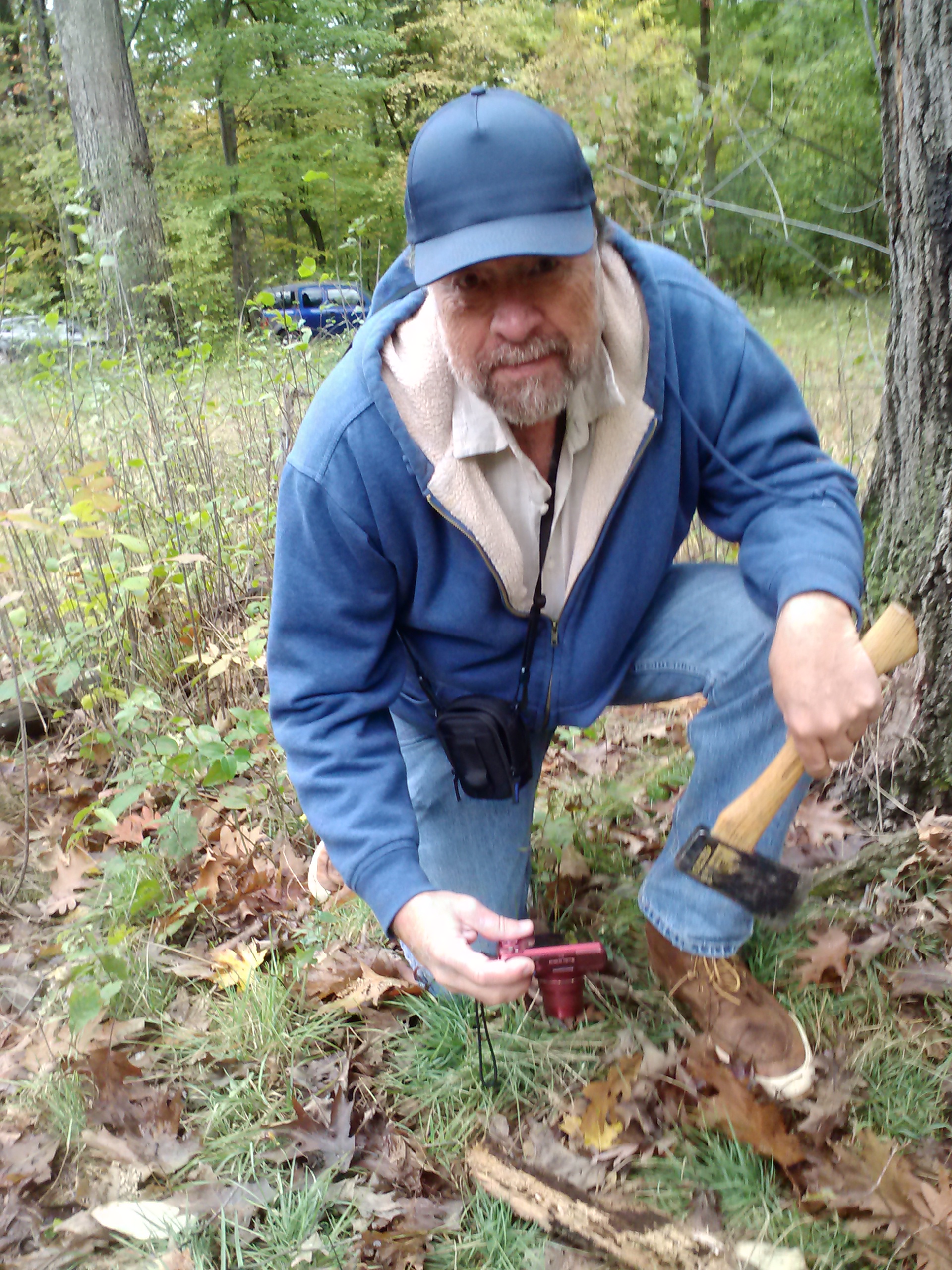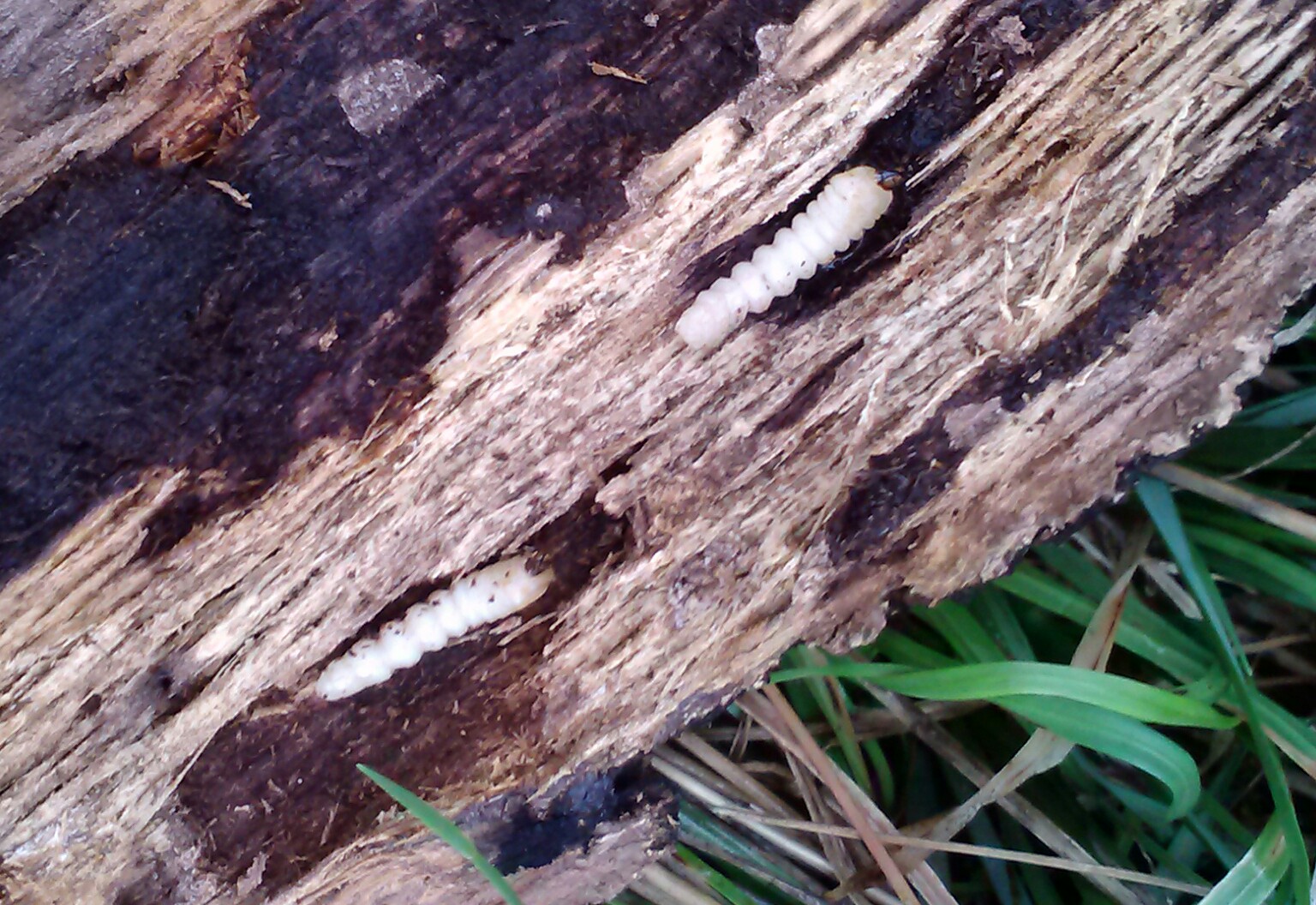by Elsa Johnson
Last summer Gardenopolis Cleveland wrote about a project in Forest Hill Park undertaken by the Great Meadow Task Force for the East Cleveland Parks Association. The task force inventoried all the old growth trees (about 70 trees) in the park’s most iconic space, the Great Meadow, and with the help of Dr. David Roberts, a tree pathologist from Michigan University, arrived at the conclusion that the trees in the meadow are largely healthy and in good shape. However, as the summer wore on, it became clear that a group of 5 chestnut oaks about midway along the south perimeter access trail were showing signs of distress, with one clearly past saving.
How quickly this happened! It was shocking. The task force decided to invite Dr. Roberts back for a look at these trees, and at the trees in the area called the Meadow Vista, north across Forest Hill Boulevard.
Chestnut oak is an oak in the white oak group, native to the eastern United States, and an important ridgetop tree of the Appalachian mountain range chain, with a sparser outlier population in our northeastern Ohio foothills. Since most of us have never seen a chestnut leaf it will help to tell you that a single individual leaf somewhat resembles a beech leaf, but with small lobes, rather than fine dentations, and these gather together in a cluster.
Peeling back the bark on the dead chestnut oak tree revealed the grubs of two-lined chestnut-borers at about chest height.
The borer starts its damage to the tree’s vascular system at the top of the tree, and works its way down. If only a few branches are affected presumably the tree could be saved, but when one finds the grubs at the base, the tree is definitely not salvageable. It is dead and should be removed and chipped (which kills the larvae). This borer is a serious insect pest of chestnut, white, black, red, scarlet, and bur oaks. Preventative treatment is possible, but treatment after a tree shows clear signs of decline is unlikely to save it.
Alas, this does not bode well for the park’s mostly oak forest. To prevent spread of this opportunistic insect in the Great Meadow (were there the funds to do so) these trees need to be gotten out of there.
Then we all regrouped in the Meadow Vista, which has been suffering tree loss for a longer period of time than the Great Meadow; here many trees are diseased and dying. Examination of more recently dead trees here revealed chestnut borers in every affected tree. However, what Dr. Roberts was looking for was evidence of fungal pressure pads under the bark of dead and dying trees. He strongly suspected oak wilt here, based on the infection pattern he was seeing, with dead and diseased trees spreading in an ever widening ring from a center. And although we never did find pressure pads, but found lots of two-lined chestnut borer larvae, he remained concerned that oak wilt was also an issue here.
Oak wilt is an equally (or more) devastating diagnosis for our trees in the Meadow Vista. Where it might be manageable in the Great Meadow (were there the funds for treatment) in the more closely knit environment of the Meadow Vista and surrounding woods, management quickly becomes impossible as individual trees give way to densely packed forest… for oak wilt travels through the soil via the interconnected roots of same-species trees (i.e., red oak to red oak), and kills the vascular systems of trees through the soil, from the soil up. In an oak opening or savannah with some considerable distance between trees, one can cut trenches, severing the root systems, thus preventing spread. But where trees grow close together and the disease is manifesting in several locations, severing interconnected root systems is almost impossible.
The only good thing about oak wilt, and this is a very, very small thing, is that the white oak group succumb less often and less quickly than red oaks – and, indeed in Meadow Vista, all the affected trees are red oaks. Again, infected trees should be removed, chipped, and then covered for the year it takes to make sure the fungus is no longer viable.
What is the cause of so much disease? As I meet and talk with people in Cleveland Heights I discover other areas where oak trees have been lost to disease, or where there is failure to thrive. Is it stressed biological environments? How does a summer like the one we had in 2016 contribute to diseases like these? How do we plan a forest for the future? Another article will look at these questions.



Thank you for this informative, though very sad, report. Oaks – and their acorns – are invaluable to birds and other wildlife, and I’ve been deeply concerned about the loss of Pin Oaks in my Cleveland Heights neighborhood. (Pin Oaks are in the Red Oak group). We’ve lost a number of large, old ones not far from our house in a rather short period of time, I’d read about the Oak Wilt, but did not know about the Chestnut Borer.